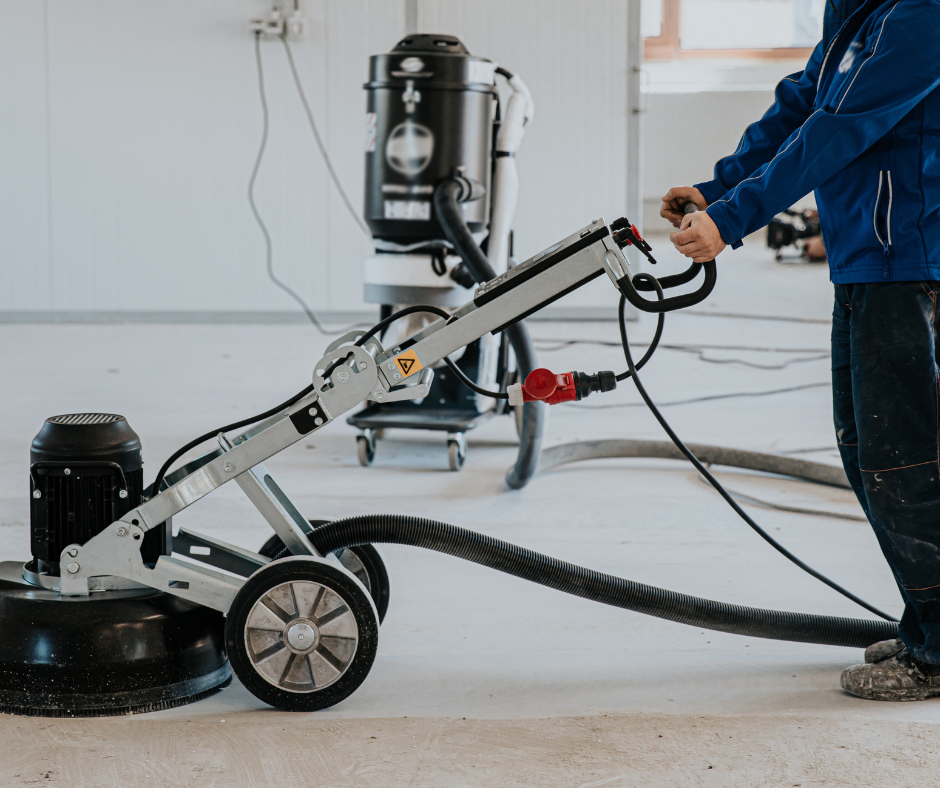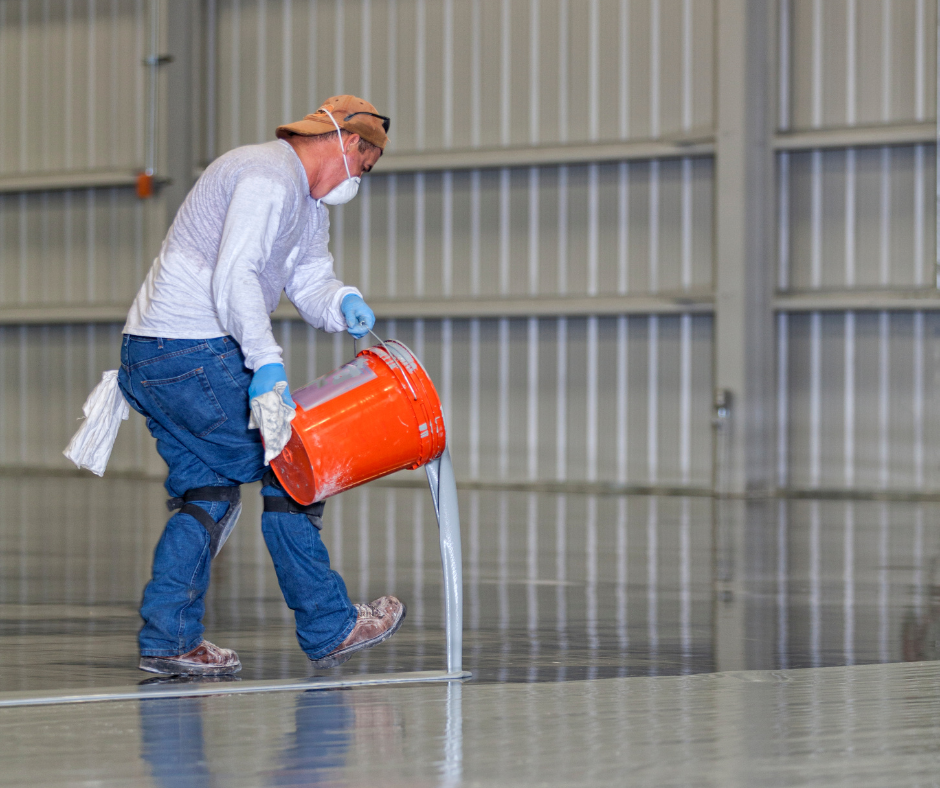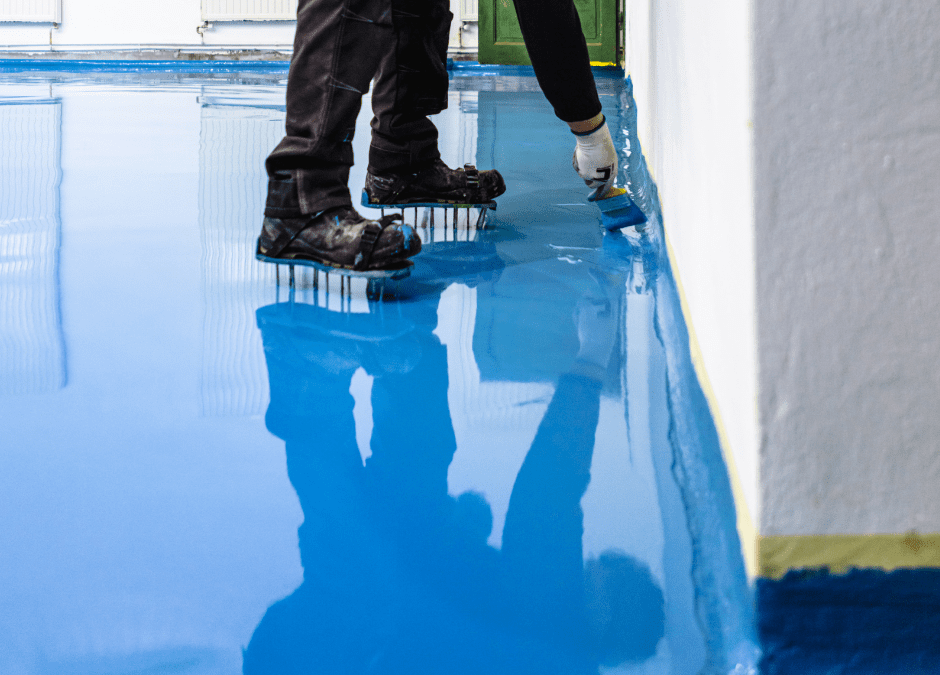Introduction
Epoxy floors have become a popular choice for residential, commercial, and industrial settings due to their durability, aesthetic appeal, and resistance to various elements. Whether you’re looking to upgrade your garage floor with a new garage floor coating or seeking a durable solution for your industrial floors, epoxy floor coating offers numerous benefits. In this comprehensive guide, we’ll delve into the intricacies of epoxy flooring, the advantages of using an epoxy flooring kit, and explore polyaspartic flooring as a viable alternative.
Understanding Epoxy Flooring
What is Epoxy Flooring?
Epoxy flooring is a type of floor coating that consists of epoxy resins and hardeners. When these components are mixed, they form a rigid plastic material that bonds exceptionally well to concrete surfaces, providing a durable and high-performing finish. Epoxy floors are commonly used in garages, basements, industrial settings, and even interior applications due to their robust nature and versatile aesthetics, making them an excellent choice for garage floors.
The Benefits of Epoxy Flooring
- Durability: Epoxy floors are renowned for their exceptional durability. They can withstand heavy traffic, resist abrasions, and endure the impact of heavy machinery, making them ideal for industrial floors and garages.
- Chemical Resistance: Epoxy coatings are highly resistant to harsh chemicals, including oil, gasoline, bleach, and cleaning agents. This makes them perfect for environments prone to chemical spills.
- Aesthetic Appeal: Epoxy flooring kits come in a variety of colors and finishes, including metallic floors, allowing for creative and customizable designs.
- Low Maintenance: Epoxy floors are easy to clean and maintain. Their seamless surface prevents dirt, bacteria, and debris from accumulating, ensuring a hygienic environment.
- Waterproof and Stain Resistant: Epoxy coatings create a non-porous surface that is resistant to water and stains, making them ideal for wet areas and places prone to spills.

Key Components of Epoxy Floor Coating
Epoxy Resins and Hardeners
The primary components of epoxy floor coatings are epoxy resins and hardeners. When these two substances are mixed, they undergo a chemical reaction that creates a strong and durable surface.
Primer and Base Coat
For optimal adhesion and durability, a primer is often applied to the concrete substrate before the base coat. The primer ensures that the epoxy bonds effectively with the concrete, preventing issues like peeling and bubbles.
Top Coat
The top coat provides additional protection and enhances the appearance of the floor. It can be customized with various finishes, such as high gloss, matte, or metallic.
Surface Preparation
Importance of Surface Preparation
Proper surface preparation is crucial for the success of an epoxy flooring installation. Without adequate preparation, issues like poor adhesion, bubbling, and cracking can occur, compromising the floor’s integrity and lifespan.
Steps for Surface Preparation
- Cleaning: Remove all debris, dust, and stains from the concrete surface.
- Repairing Cracks: Fill any cracks or imperfections with an appropriate filler to create a smooth substrate.
- Grinding: Use a concrete grinder to roughen the surface, ensuring better adhesion of the epoxy coating.
- Priming: Apply a primer to seal the concrete and provide a suitable base for the epoxy.
Installation Process
Mixing the Epoxy
Proper mixing of the epoxy resin and hardener is essential for a successful application. Follow the instructions provided with your epoxy flooring kit to ensure the correct ratio and mixing time.
Applying the Coating
- Primer Application: Start by applying the primer with a squeegee or roller, ensuring even coverage.
- Base Coat: Once the primer has cured, apply the base coat using the same method.
- Top Coat: After the base coat has cured, apply the top coat for added protection and desired finish.
Working Time and Curing
Epoxy coatings have a specific working time, also known as pot life, which is the period during which the mixed epoxy remains workable. After application, allow the epoxy to cure according to the manufacturer’s instructions to achieve the best results.

Epoxy Flooring in Different Settings
Residential Applications
In homes, epoxy flooring is commonly used in garages, basements, and laundry rooms. A high-quality garage floor coating can significantly enhance the durability and appearance of your garage. Its durability and resistance to moisture and stains make it an excellent choice for these areas.
Commercial and Industrial Applications
Epoxy floors are ideal for commercial and industrial environments due to their durability and resistance to heavy traffic and chemicals. They are commonly used in warehouses, factories, hospitals, and laboratories.
Polyaspartic Flooring: A Viable Alternative
What is Polyaspartic Flooring?
Polyaspartic flooring is a type of floor coating that offers many of the same benefits as epoxy but with a few distinct advantages. It is a fast-curing, UV-stable, and highly durable coating that can be applied in various settings.
Benefits of Polyaspartic Flooring
- Rapid Curing: Polyaspartic coatings cure much faster than epoxy, often within a few hours, allowing for quicker project completion and minimal downtime.
- UV Stability: Unlike epoxy, polyaspartic coatings are UV stable and do not yellow over time, making them suitable for outdoor applications.
- Durability: Polyaspartic floors are highly resistant to abrasion, chemicals, and impact, similar to epoxy floors.
- Low Odor and VOC Content: Polyaspartic coatings emit low levels of volatile organic compounds (VOCs) and have minimal harmful odors, making them safer for indoor applications.
Comparing Epoxy and Polyaspartic Flooring
While both epoxy and polyaspartic flooring offer excellent durability and protection, the choice between the two depends on specific project requirements. Epoxy is ideal for projects where budget and working time are less of a concern, while polyaspartic is preferred for projects requiring rapid curing and UV stability.

Maintenance and Longevity
Cleaning and Maintenance
Maintaining epoxy floors is straightforward. Regular sweeping and occasional mopping with a mild detergent will keep the surface clean. Avoid using harsh chemicals that could damage the coating.
Longevity
With proper installation and maintenance, epoxy floors can last for many years. The durability and resistance to wear and tear make them a long-term investment for both residential and commercial properties.
Common Issues and Troubleshooting
Bubbles and Blisters
Bubbles and blisters can occur if the surface is not properly prepared or if the epoxy is applied in humid conditions. Ensuring a clean, dry, and well-ventilated environment during application can prevent these issues.
Peeling and Cracking
Peeling and cracking are often the result of poor surface preparation or improper mixing of the epoxy components. Adhering to the manufacturer’s instructions and thoroughly preparing the surface can mitigate these problems.
Conclusion
Epoxy flooring offers a durable, aesthetically pleasing, and low-maintenance solution for various settings. From residential garages to industrial floors, the benefits of epoxy coatings are numerous. For those seeking a rapid-curing and UV-stable alternative, polyaspartic flooring is an excellent option. By understanding the components, installation process, and maintenance requirements, you can achieve a professional finish that will last for years. Whether you choose epoxy or polyaspartic, investing in a quality floor coating system will enhance the functionality and appearance of your space.
For more information on concrete coatings and professional installation tips, consult with industry professionals and explore a Garage Force location near you. With the right preparation and materials, you can transform your concrete floors into a durable and beautiful surface.

